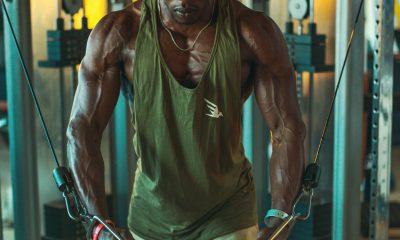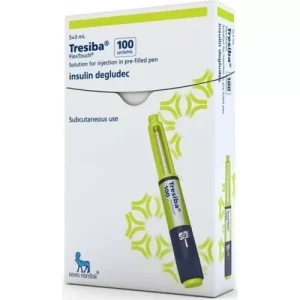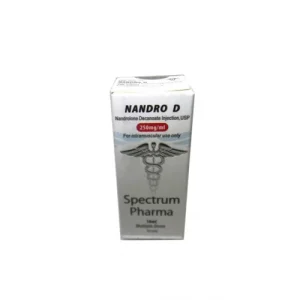Anabolic Steroids
What Are The Stages of Topical Steroids Withdrawal?
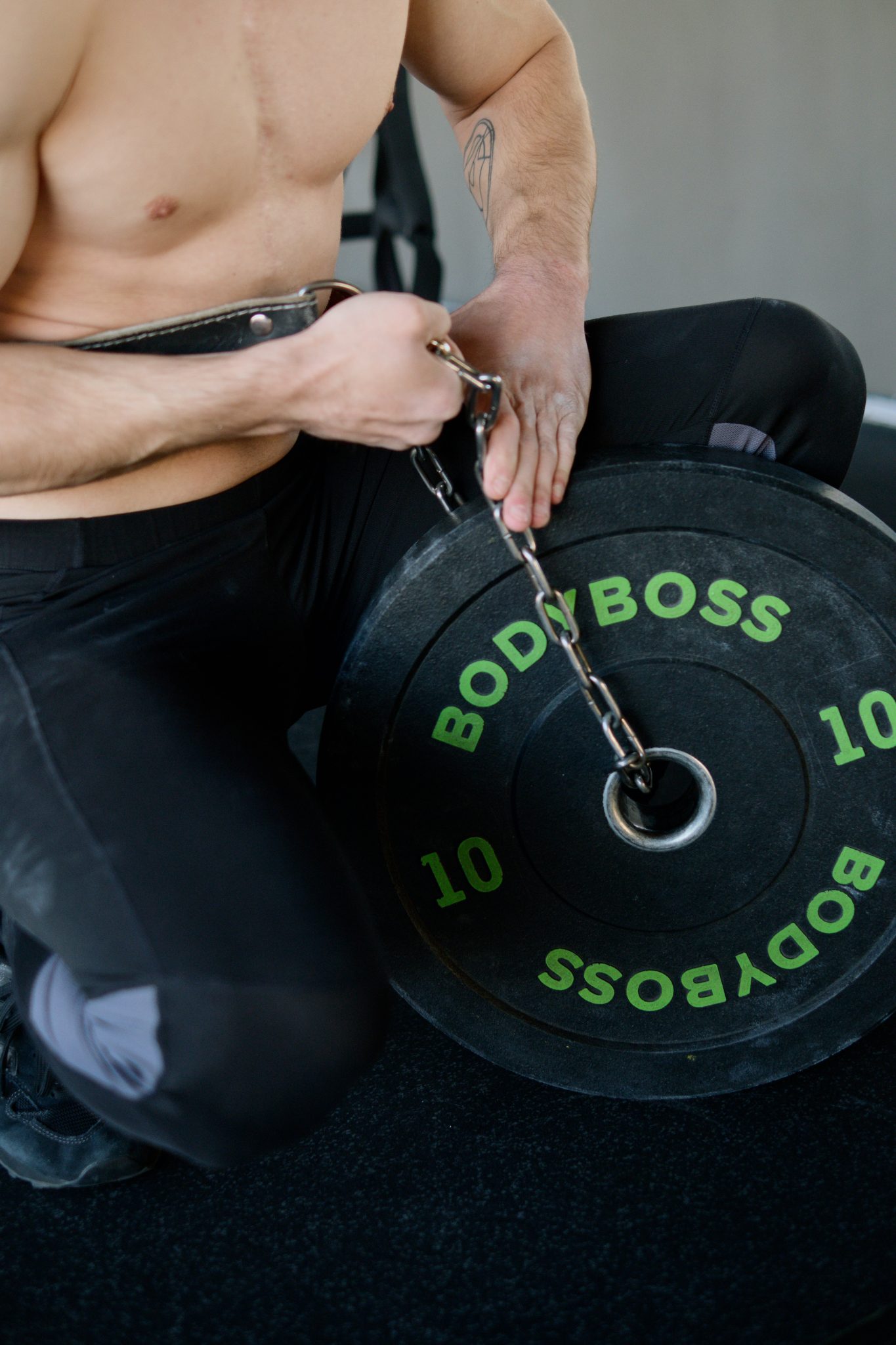
What are Steroids?
Steroids are the hormones the human adrenal cortex produces. They also refer to the synthetic drug with cortisol effects. Steroids, also known as corticosteroids, are very different from steroid compounds used by athletes to enhance their performances. Usually used in medical cases. Medical conditions steroids used to treat include allergies, asthma, dermatitis, hives, Addison's disease, Crohn’s disease, leukemia, prostate cancer, etc.
Steroids are classified into types depending on the effect they create within the body. They also produce many side effects, such as depression, anxiety, insomnia, hypertension, fluid retention, muscle wasting, decreased height, cataracts, glaucoma, peptic ulceration, and TSW (topical steroids withdrawal).
Must Read:: Can Blocking Cortisol Lead to Steroid-Like Muscle Gains?
Topical Steroids:
These are medications in creams, lotions, ointments, solutions, serums, gels, sprays, foam, oils, shampoos, and other substances made for the skin or scalp. Also used for anti-inflammatory purposes, to treat or control skin infections such as eczema and dermatitis. Other names for topical steroids are topical corticosteroids, glucocorticosteroids, and cortisone.
Effects of Topical Steroids:
These steroids cause the same effects as the corticosteroids produced by the adrenal glands above the kidneys. Other side effects of applying these steroids on the skin or scalp include narrowing blood vessels, suppression of immune response, and reduced cell turnover. All the effects of using these steroids can be classified under the following:
- Anti Inflammatory
- Immunosuppressive
- Anti-Proliferative
- Vasoconstrictive
The Potency of Topical Steroids:
The potency of topical steroids refers to the working capacity of the medication, and they can be grouped into four:
- Low Potency: Topical Steroids classified as having low potency include alclometasone dipropionate, hydrocortisone, and desonide.
- Moderate Potency: Topical Steroids with medium potency include betamethasone valerate, clocortolone pivalate, flurandrenolide, fluocinolone, fluticasone propionate, and hydrocortisone valerate.
- High Potency: Topical steroids grouped under this category include desoximetasone, halcinonide, amcinonide, and triamcinolone acetonide.
- Very High Potency: Topical steroids in this category include betamethasone dipropionate, diflorasone diacetate, fluocinonide, clobetasol propionate, and clobetasol propionate.
Find it >> HERE
The potency of a Topical Steroid would largely depend on the following factors:
- Formulating components
- The amount that reaches the target cells
- The specific molecule
- The rate of absorption through the skin.
You can purchase topical steroids with mild potency, just over pharmaceutical counters, but those with high and very high potency should only be on doctor’s prescriptions.
Conditions that would require being treated and controlled by the use of Topical Corticosteroids include:
- Eczema (atopic eczema): This skin condition causes the skin to feel itchy, scaly, dry, and cracked. It may even lead to severe skin inflammation. This inflammation causes the skin to become red, dark brown, or gray, depending on skin tone. It usually is a long-term condition that affects the central part of the skin, such as the hands, backs, knees, faces, scalps, etc. However, it can still be controlled and treated using topical steroids. It is the most common form of eczema.
Find it >> HERE
- Dandruff: This skin condition usually affects the scalp, making it dry and itchy. It causes white flakes on the scalp and hair. Using a shampoo containing topical corticosteroids should help in treating this skin condition.
- Psoriasis: This is a skin condition that usually occurs on the elbows, knees, scalp, legs, and lower back but can occur on any part of the body. It causes a small patch of red, flaky, crusty, and itchy skin. This chronic disease is caused by the multiplied production of skin cells resulting in a build-up. This skin condition can also be controlled by the use of topical steroids.
- Nappy Rash: This is a skin condition in babies that causes a sore and itchy red patch of skin on the baby’s bottom most. It can also happen in the form of spots or blisters. Using a cream containing topical steroids can help with this situation, especially when it is in its severe state.
Lichen Planus:
This skin condition can occur in the mouth, groin, nails, and other body parts. It causes a cluster of glossy elevated colored blotch on the affected area. This area is usually sore, itchy, and red. Using a medication containing topical steroids can help with this condition.
- Discoid Lupus Erythematous: This condition causes skin rashes, extreme fatigue,, and inflammation of the joints. It can also lead to weight loss and extreme joint pain. This condition can be controlled by using creams that contain topical steroids.
- Skin Irritation: Skin irritation characterized by swollen, itchy, and red skin parts can be caused by many factors. An insect bite is a factor. Applying a medication that contains topical steroids would be effective in alleviating the pain.
Combination with Other products:
Topical steroids are usually used with other ingredients, such as anti-bacterial and anti-fungal, to create a more effective result. The risks involved in using topical steroids with other drugs are quite low, and there is no significant effect on the potency of topical steroids when combined with other products.
These other drugs do not affect the concentration or effect of topical steroids. However, it is strongly advised that other topical medications should not be carried out simultaneously as topical corticosteroids to avoid creating more adverse effects.
How Topical Corticosteroids Are Used:
If you purchase any topical steroid from over the pharmaceutical counter, ensure you follow the instructions on the leaflet. Otherwise, you should adhere strictly to the doctor’s prescription. These substances are often applied to the affected part once or twice daily for two weeks or more. It should be used less frequently as treatments commence. The use of these medications should be reduced to once a day to avoid the occurrence of topical steroid withdrawal.
Also, it should not be applied all over the body but to the affected parts. It should be applied gently to the skin. If you use emollients, avoid using both substances at the same time. Give a 30 minutes time difference between the applications of both substances. These emollients help to relieve skin irritation and dryness.
The Finger Print Unit
The fingerprint unit acts as a guide for using the right dosage of topical steroids in treating skin conditions. You squeeze a quantity of the product from the tip of your finger to the first crease. This quantity should be enough to treat skin conditions over a patch of your skin two times the size of your palm. However, the dosage will still depend on what is being treated and the part of the body it is being treated. This is major because some body parts have thinner skin layers and are hence more sensitive than others. This dosage is often referred to as FTUs(s).
The absorption of topical steroids into the body occurs in different ways. For instance, the greatest absorption happens through the skin layer of the genitals, eyelids, and creases. Hence, potent and highly potent topical steroids should not be used on these parts of the skin.
Find it >> HERE
The least absorption of topical steroids occurs through the skin layer of palms and soles. Hence, low and moderately potent topical steroids may seem ineffective when applied to these parts of the skin. Using bandages or wraps to occlude the affected part would also help to increase the absorption of topical steroids through the skin layer.
Below is the recommended dosage for each part of an adult's body, using the Finger Print Unit
- 0.5 FTU for the skin found around the genitals.
- 1 FTU for skin located around the hands, elbows, and knees.
- 1.5FTUs for the skin located around the feet, including the soles.
- 2.5 FTUs for skin located around the face and neck
- 3 FTUs for the skin located around the scalp
- 4 FTUs for the skin located around the hand, arm, and the buttocks
- 8 FTUs for the legs and chest or the legs and the back
Who should use Topical Corticosteroids?
Adults and children can use topical steroids. However, avoid using topical steroids for treatment if you have infected skin, broken skin, or skin conditions like acne and open sores. Pregnant and nursing mothers should only use topical steroids in necessary situations. Research shows that the prolonged use and abuse of these substances can cause defects in the unborn child.
Therefore, using topical steroids with high potency should not be practiced by nursing and breastfeeding mothers. There is no proof that the content can contact the breast milk mother. Apply all caution during usage, topical steroids, and even low potency. Do not apply topical steroids to a nursing mother’s breasts; if she must use these medications, she should also be careful to wash off the cream before breastfeeding her child. This safety measure is significant to prevent the child from being harmed.
Side effects of using Topical Steroid Withdrawal:
For the use of most medications, there are side effects that may occur with different individuals. These side effects should not be confused with Topical Steroid Withdrawal. The side effects include:
- Some individuals may experience specific internal side effects that are similar to the symptoms of crushing syndrome.
- It can also result in skin thinning, that is, the reduction of skin elasticity.
- Stretch marks in armpits or genitals.
- Tearing of the skin due to the extreme thinness of the skin layer.
- The enlargement of blood vessels.
- The thickness and increased length of hair.
- It can also lead to cataracts and glaucoma when used frequently over the eyelids.
- Stinging of the skin can also occur when topical steroids apply to areas of the skin that have inflammation or are broken.
- Topical steroids can also heighten the effects of other skin infections, such as herpes simplex.
Topical Steroid Withdrawal:
This is also known as red skin syndrome or steroid dermatitis, which occurs after a person ceases to use topical steroids after prolonged regular use or the abuse of topical steroids. This condition usually occurs with the use of topical steroids with high levels of potency. The symptoms are mostly on the face and genitals. However, there is no exact time or duration for these symptoms to appear. It differs in individuals; in some, it may be a few months, while for others, it could take many years. Individuals with atopic dermatitis and women who blush often are at more risk. Very few reports have occurred in children. The first known case of topical steroid withdrawal happened in 1979.
Causes:
This condition is mainly caused by the abuse, prolonged or regular use of topical steroids for more than a year. It was once believed that the adrenal glands only produce cortisol. However, recent research has proven that keratinocytes in human skin should also be included in the list. The prolonged or regular use of topical steroids would cause an adverse expression on the surface of lymphocytes.
Diagnosis:
We mustn't attribute every skin condition to Topical Steroids Withdrawal. Some symptoms of Topical Steroid Withdrawal are redness and rash on the face, excluding the nose and around the lips. This rash usually begins from the part of the skin that initially had the condition to be treated. Redness of the arms except for the palms and fingers. The reduction of the skin's elasticity can also be a way to tell if you have this condition. A burning feeling under the skin also forms part of the diagnosis. The reddened part of the skin may not just be a patch. It may also appear as the original skin condition the topical steroid is applied to treat or control. Your skin can also feel thickened and swollen.
Using this product with the right frequency and dosage and over the appropriate duration helps treat and control skin conditions. Side effects and topical steroid withdrawal only occur when you use the product in larger quantities or frequently over a long period, beyond the prescriptions of doctors, dermatologists, and physicians. It is also important that the use of this treatment need to be under the supervision of a dermatologist.
Deciding not to use topical steroids to treat or control skin conditions due to the knowledge of these side effects and topical steroids withdrawal may not be the best of choices as these substances can prove effective in the treatment of skin conditions, mainly when used according to prescription and over the right duration. Besides, this condition is pretty rare both in adults and children.
Significant signs and symptoms of topical steroid withdrawal include:
- Spreading Dermatitis through the skin, usually starting from the location or region previously affected by the skin condition that creates.
- Skin Inflammation accompanied by a burning, stinging sensation.
- Redness of the skin, usually the face, excluding the nose and around the lips.
- Swelling of different regions of the skin. This particular symptom is one the affected individual should waste no time in informing the physician or dermatologist.
- Intense itching in various areas of the skin is also a sign or symptom.
- Increased skin sensitivity to other topical products or atmospheric conditions.
- Oozing of liquid substances from the different parts of the skin.
These symptoms may develop weeks or months after the stoppage of topical steroid withdrawal. It is usually different per individual, but most cases happen with individuals who have used the product for more than 12 months.
Must Read:: How Do You Get Rid of Steroid Acne?
These signs and symptoms can also be classified into two types. Both are referred to as erythema to edematous and papulopustular. The erythema to edematous type is found in individuals with atopic or seborrheic dermatitis, accompanied by swelling, burning, redness of the skin, and heightened skin sensitivity. All these symptoms would occur within a fortnight from the stoppage of topical steroids.
The papulopustular type is found in individuals who have used these medications to treat acne. This comes with symptoms such as pimples, nodules, and redness. This is when this product is for cosmetic purposes.
Prevention of Topical Steroids Withdrawal
The most effective prevention method is using these medications strictly based on prescriptions. These symptoms are more likely to appear in these medications that are misused. The more frequently topical steroids are used, the more likely the individual to develop topical steroids withdrawal. The more potent the topical steroid and if used for a longer period than prescribed, the higher the probability of having topical steroid withdrawal. Use topical steroids to treat or control skin conditions and not for cosmetic purposes. Preventing these withdrawal symptoms is simple if you adhere to the above guidelines. However, in totally preventing topical steroid withdrawal, treatment of chronic skin conditions with the use of topical steroids shouldn't avoid or discourage.
Treatment of Topical Steroid Withdrawal:
No one treatment widely agrees upon this. However, the first step would be to consult your dermatologist or skin care physician. There has to be a diagnosis to be sure that the symptoms noticed are of topical steroid withdrawal and not another skin condition like eczema.
Once the diagnosis has been made, the next step would be to stop the wrong use of these medications. There have been some arguments about stopping these medications' use abruptly or gradually. However, there is no significant difference in the results produced by both actions. It highly advises stopping the use of the medications immediately.
Psychological Support
Support and psychological care should also be patient. Other ways to help with the condition include using ice compresses, systemic doxycycline, tetracycline or calcineurin inhibitors. Ointments and balms such as shea butter have also be found to be helpful during this time. Epsom salt bath is also helpful in the recovery process. Antihistamines should be used to help with the intense itching of the skin that also occurs as a symptom. Immunosuppressants suggest helping as well.
Find it >> HERE
Another method would be to use oral steroids to reduce the symptoms. If it has led to secondary infections, oral antibiotics should be used. Patients should use soaps and detergents that would be suitable for sensitive skin. Also, wear clothes that are milder and softer on the skin to help reduce irritation. There have also been suggestions for natural and alternative medicine. However, these methods take approval from your doctor before attempting to use them so they do not worsen the condition.
Duration of Treatment:
The duration of treatment and recovery is not the same for everyone. However, it usually influences by the period through which these medications are used; the longer the period of use would mean a more extended period for recovery. The duration of recovery and the time it would take for the skin to return to normal would also depend on the treatment used. This duration can be months or even years for specific individuals. It advises taking steps to prevent this from occurring instead of waiting so long for your skin to return to normal.
Conclusion
In conclusion, topical steroids are very effective in controlling and treating skin conditions, both mild and chronic. It may lead to an eventual cure for some but for others, it may help relieve the symptoms. However, if used in excess, abused, used in large quantities and over a long period, it may lead to topical steroid withdrawal. Though this condition is quite rare, it advises that it prevents strictly following prescriptions. It would be good to also have your treatment monitored by your dermatologist or physician.
Anabolic Steroids
Joint Stiffness: How to Manage It While on AAS
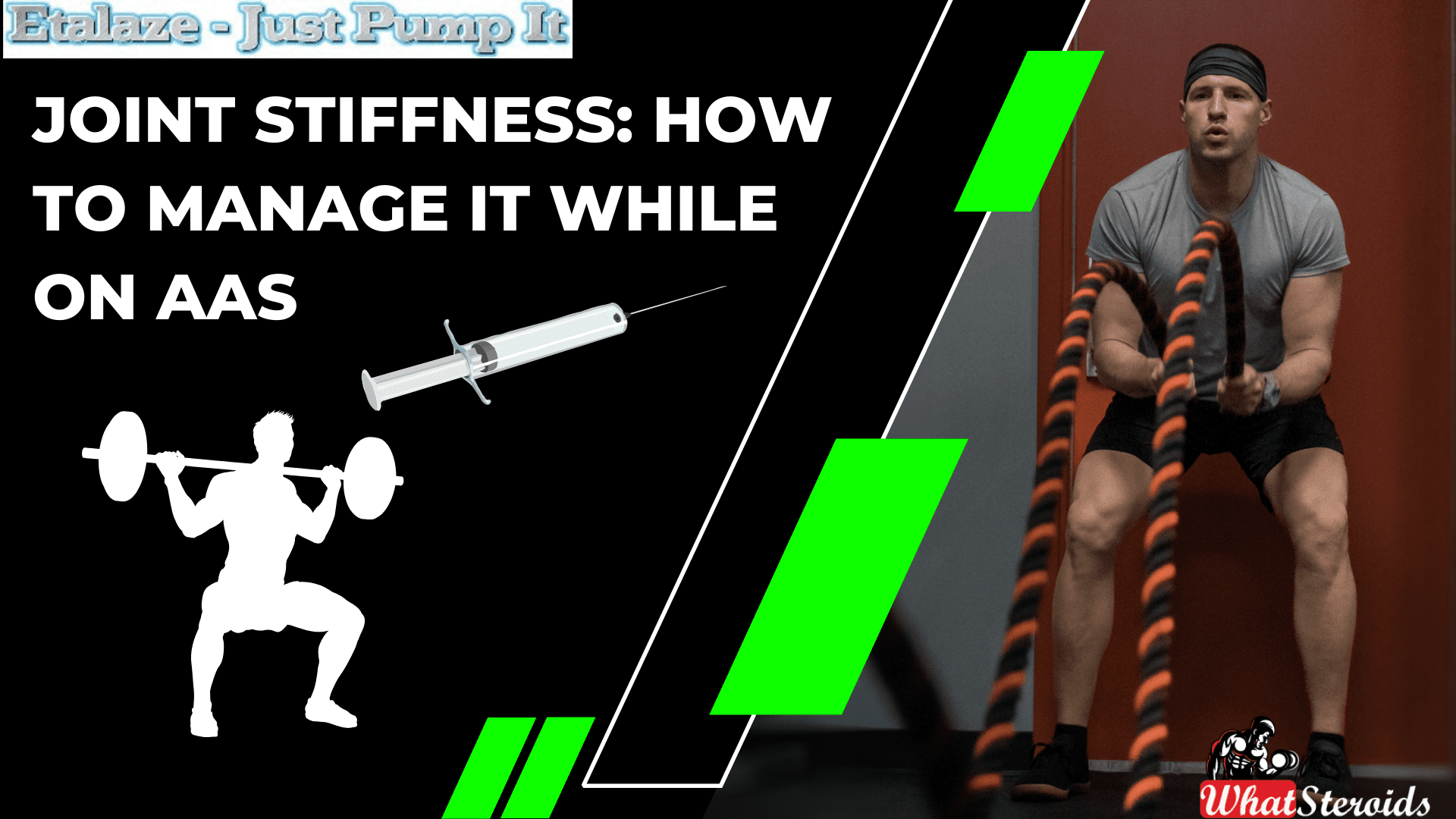
Joint stiffness is a common issue in steroids bodybuilding and the use of androgenic anabolic steroids (AAS). Here's how it happens and what it involves:
AAS Mechanism of Action
Anabolic-androgenic steroids (AAS) work by enhancing muscle growth and strength. They enlarge muscle cells through hypertrophy, leading to increased muscle mass.
Activation of Androgen Receptors (AR)
-
- AAS, including those produced naturally (such as testosterone and dihydrotestosterone), bind to and activate the androgen receptor (AR).
- The AR is present in various tissues throughout the body.
Androgenic and Anabolic Effects
AAS effects can be categorized into:
Androgenic: These relate to the development and maintenance of male sexual characteristics.
Anabolic: These involve increasing bone density, muscle mass, and strength.
Impairment of Testosterone Biosynthesis
-
- In supraphysiological doses, AAS can impair testosterone biosynthesis in tissues.
- This disruption occurs due to their interaction with AR signaling.
How AAS Contribute to Joint Stiffness
Water Retention and Electrolyte Imbalance
-
- AAS can cause water retention, leading to increased fluid in the joint spaces. While this might initially seem beneficial, it can lead to stiffness if the excess fluid disrupts normal joint function.
- Electrolyte imbalances caused by AAS can affect muscle and joint function, contributing to stiffness.
Changes in Collagen Synthesis
-
- AAS can affect the synthesis and degradation of collagen, a primary component of connective tissue. This can lead to a decrease in the elasticity and resilience of tendons and ligaments, making joints feel stiffer.
Increased Muscle Mass
-
- Rapid gains in muscle mass can place additional stress on joints, which may not have time to adapt, resulting in stiffness and discomfort.
Altered Pain Perception
-
- Some AAS can alter pain perception and inflammatory responses, potentially masking injuries or causing changes in how the body responds to minor joint stresses, leading to stiffness.
Which Specific AAS Mainly Cause Joint Stiffness?
While not all anabolic-androgenic steroids (AAS) exhibit these adverse effects, certain ones are more prone to causing them. These include:
- Winstrol
- Masteron
- Proviron
- Halotestin
- Trenbolone
Additionally, high doses of testosterone, Dianabol, and Trestolone may also carry similar risks.
Dealing With Joint Stiffness Caused By AAS
Most AAS are dry compounds known for causing joint dryness. Some are usually wet compounds, which can lead to joint problems when taken in high doses without an aromatase inhibitor (AI), resulting in excess water retention that affects the joints.
Other AAS either have a neutral impact on the joints or enhance their strength and healing by boosting collagen production, with Nandrolone being a prime example.
To prevent joint issues when using wet AAS compounds, it is essential to use the appropriate AI dose (not too high) to manage estradiol levels and prevent excessive water retention.
Must Read: Anavar Cycle for Men and Women
For dry compounds, follow these guidelines to avoid joint issues:
Selective Testosterone Use
Ensure the use of a Testosterone and steroids bodybuilding base to achieve adequate estradiol conversion. While excess estradiol can cause water retention and joint damage, having the right amount is crucial for joint strength and lubrication.
Proper Gym Training
Exercise caution in the gym. Continuously pursuing personal records and lifting the heaviest weights can damage joints and cause injuries. Proper stretching and warming up with lighter weights are vital.
Supplements
Supplement with joint health supplements. Fish Oil at 6g daily or Krill Oil at 3g daily is essential for every AAS user. Additionally, taking MSM (Methylsulfonylmethane) at 1g daily and a few tablespoons of Collagen Powder daily will significantly benefit joint health.
Managing Other Forms of Joint Stiffness
Proper Warm-Up and Cool-Down
Engaging in thorough warm-up routines before workouts and adequate cool-down exercises afterward can help maintain joint flexibility.
Hydration and Nutrition
Staying well-hydrated and maintaining a balanced diet rich in essential nutrients like omega-3 fatty acids, glucosamine, and chondroitin can support joint health.
Supplementation
Using joint support supplements such as glucosamine, chondroitin, and MSM (methylsulfonylmethane) may help alleviate stiffness.
Monitoring and Adjusting Steroid Use
Careful monitoring of AAS dosages and cycles, under the guidance of a healthcare professional, can help minimize negative effects on joint health.
Rest and Recovery
Ensuring adequate rest and incorporating rest days into training routines can help prevent overuse injuries and joint stiffness.
Physical Therapy
Engaging in physical therapy or specific joint mobility exercises can improve joint function and reduce stiffness.
Long-Term Considerations
It's important to be aware that chronic use of AAS can lead to long-term joint issues. Regular check-ups with a healthcare provider, including monitoring of joint health, are crucial for those using AAS over extended periods. Recognizing the signs of joint problems early and taking proactive measures can help mitigate the risk of long-term damage.
Where to Buy AAS Online
Buying legitimate androgenic anabolic steroids (AAS) online can be challenging and carries significant legal, health, and ethical risks. However, if someone decides to proceed, here are some general tips on where to buy and how to check the quality:
Licensed Pharmacies (Where Legal)
In some countries, AAS can be purchased legally with a prescription from licensed pharmacies. Ensure to follow local regulations and obtain a valid prescription.
Reputable Online Retailers
Look for well-known, established online retailers with positive reviews and verified customer feedback. Forums, bodybuilding communities, and social media can provide recommendations.
Research Chemical Companies
Some companies sell research chemicals, including AAS, for "research purposes." Ensure these companies have good reputations and offer transparency about their products.
How to Check Good Quality
Third-Party Lab Testing
The best way to verify the quality of AAS and steroids bodybuilding is through third-party lab testing. Reputable sellers often provide lab reports or certificates of analysis that verify the purity and potency of their products.
Reviews and Testimonials
Check reviews on bodybuilding forums, websites, and social media platforms. Look for consistent positive feedback about product effectiveness, safety, and customer service.
Batch Numbers and Serialization
Legitimate products usually have batch numbers, expiration dates, and sometimes serialization. You can often verify these details through the manufacturer's website.
Packaging and Labels
Examine the packaging and labels for professionalism and accuracy. Poorly printed labels, misspellings, and low-quality packaging are red flags.
Customer Service
Good suppliers will have responsive and knowledgeable customer service. Ask questions about their products, sourcing, and testing procedures to gauge their reliability.
Price Comparison
If the price seems too good to be true, it probably is. Compare prices with other reputable sources to ensure you're not buying counterfeit or low-quality products.
Related Article: Varicose Veins in Bodybuilders: Risk Factors, Diagnosis and Management
Warning and Legal Considerations
- Legality: The legality of purchasing and using AAS varies by country. In many places, it is illegal to buy AAS without a prescription. Always check local laws before purchasing.
- Health Risks: Using AAS without medical supervision can lead to severe health issues. It's crucial to consult with a healthcare provider before starting any steroid regimen.
- Ethical Considerations: Consider the ethical implications of using AAS, especially in competitive sports where their use is often banned.
Conclusion
While there are ways to find and verify the quality of AAS online, it's essential to approach this with caution, awareness of the legal landscape, and a focus on health and safety. Overall, your joint health while on AAS should be a first priority so your training is not hindered.
Anabolic Steroids
How Much Do You Know About B-AET? A Fat Burner You’ve Been Missing
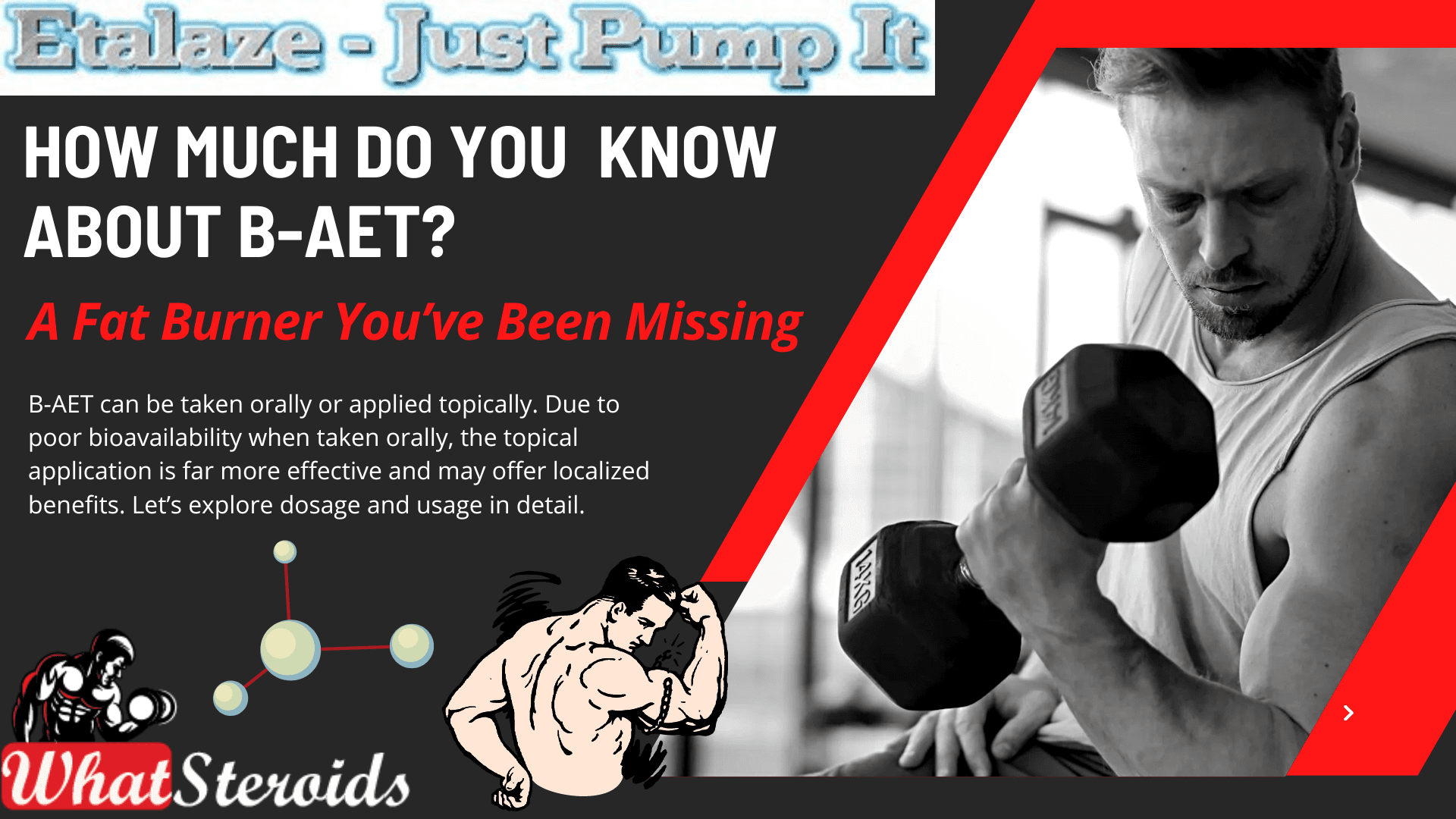
Introduction to B-AET
B-AET, or Beta-Androstenetriol, is a DHEA derivative known for its impressive health benefits, including anti-catabolism and fat loss. Despite its advantages, it remains largely unknown because it is hard to obtain, not due to any significant drawbacks.
Let’s delve into its properties:
Anti-Catabolic Effects: B-AET helps prevent muscle breakdown (catabolism). By preserving muscle tissue during intense workouts or calorie deficits, it supports overall fitness goals.
Fat Loss Potential: B-AET may enhance fat loss. While the exact mechanisms aren’t fully understood, it likely influences metabolism and fat utilization.
Challenges with Availability: As we've mentioned, B-AET is not widely accessible. Its scarcity limits research and popularity.
Comparing B-AET to 7-KETO DHEA
Similar to 7-KETO DHEA, B-AET does not suppress the HPTA and promotes fat loss by inhibiting cortisol. Based on personal experience, B-AET offers superior results compared to 7-KETO DHEA.
Must Read: 10 Week Program & 5,000 Rep Arm Specialization Program
Understanding Cortisol’s Role in Fat-Loss
Cortisol, released in response to stress, was crucial for survival in our evolutionary past. However, in today's world, chronic stress leads to persistently high cortisol levels, contributing to various health issues including fat accumulation, especially around the abdomen, insulin resistance, muscle loss, increased blood pressure, weakened immunity, impaired memory, decreased bone density, inhibited collagen synthesis, hair loss, depression, and lower testosterone levels.
Benefits of Beta-Androstenetriol
B-AET helps with fat loss by inhibiting cortisol production through the suppression of the enzyme 11β-HSD1. Users often notice significant fat reduction, especially around the lower belly. Additionally, B-AET lowers overall stress, enhances immune function, prevents muscle loss during calorie restriction, and has anti-inflammatory properties.
B-AET helps prevent muscle breakdown during intense training, preserving your hard-earned muscle mass.
By supporting muscle preservation and potentially aiding fat loss, B-AET can optimize overall performance during cutting phases.
Potential Side-Effects of Beta-Androstenetriol
Data on B-AET’s side effects is limited. Anecdotal reports suggest minimal side effects, but overuse could potentially lead to decreased stress response, fatigue, and low blood pressure due to chronically low cortisol levels. However, these risks are minimal if B-AET is used properly.
Let’s explore the potential dangers associated with Beta-Androstenetriol (B-AET) in detail:
Limited Research: As mentioned, B-AET remains relatively unknown due to limited research. Lack of comprehensive studies makes it challenging to fully understand its safety profile and potential risks.
Individual Variability: As with any compound, individual responses can vary. What works well for one person may not be suitable for another. Always consider your unique physiology and consult a healthcare professional.
Potental Side Effects
Gastrointestinal Disturbances: Some peptides can affect the digestive system, leading to nausea, vomiting, diarrhea, or stomach discomfort. While these side effects are typically transient, they’re worth noting.
Appetite and Blood Sugar: GHS peptides (including B-AET) may increase appetite and blood sugar levels.
Fluid Retention: Fluid retention is another possible side effect.
Legal Status: B-AET’s legal status varies by region. Ensure compliance with local regulations and restrictions.
Dosage and How to Use B-AET
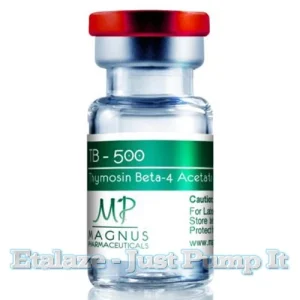 Click Here to Buy TB-500 10 mg by Magnus Pharma
Click Here to Buy TB-500 10 mg by Magnus Pharma
B-AET can be taken orally or applied topically. Due to poor bioavailability when taken orally, the topical application is far more effective and may offer localized benefits. Let’s explore dosage and usage in detail.
Dosage
Unfortunately, there isn’t a universally established dosage for B-AET due to limited research and availability.
If you decide to use it, start with a conservative dose and gradually increase if needed.
Consult a healthcare professional or a knowledgeable coach who understands peptide usage.
Usage
B-AET is typically administered via subcutaneous injections.
Follow these general guidelines:
Frequency: Inject once or twice daily.
Timing: Some users prefer morning injections to align with natural cortisol rhythms.
Cycle Duration: Cycles can vary from a few weeks to several months.
Stacking: B-AET can be stacked with other peptides or compounds for synergistic effects.
Always:
Rotate Injection Sites: Avoid injecting in the same spot repeatedly.
Reconstitute Properly: If using lyophilized powder, follow reconstitution instructions.
Store Correctly: Keep B-AET refrigerated to maintain stability.
Other Fat-burning Alternatives to Consider
Also Read: 5 Steroid Cycles for Beginners
As a bodybuilder looking to optimize fat loss, consider incorporating the following peptides into your regimen:
Amlexanox
Function: Originally used for oral ulcers, Amlexanox has shown potential for fat loss. It activates an enzyme called AMP-activated protein kinase (AMPK), which plays a role in energy regulation and fat metabolism.
Mechanism: By enhancing AMPK activity, Amlexanox promotes fat breakdown (lipolysis) and inhibits fat storage (lipogenesis).
Administration: Available as a topical gel or oral medication.
Note: Research is ongoing, and its effectiveness for bodybuilders specifically needs further investigation.
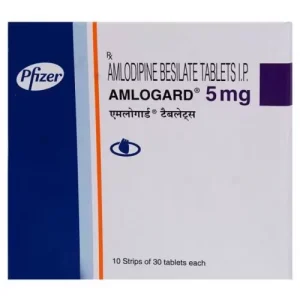 Click Here to Buy Amlogard 5 mg by Indian Pharmacy
Click Here to Buy Amlogard 5 mg by Indian Pharmacy
Glycyrrhetinic Acid
Function: Derived from licorice root, Glycyrrhetinic acid has anti-inflammatory properties and may aid fat loss.
Mechanism: It inhibits an enzyme called 11-beta-hydroxysteroid dehydrogenase, which affects fat distribution.
Administration: Often used in topical creams or as a supplement.
Caution: High doses can lead to side effects, so moderation is crucial.
Tesofensine
Function: Tesofensine was initially developed as an anti-obesity drug.
Mechanism: It increases levels of neurotransmitters like serotonin, dopamine, and norepinephrine, leading to reduced appetite and increased fat burning.
Administration: Oral tablets.
Note: Not widely available due to limited research and regulatory hurdles.
AOD9604
Function: AOD9604 is a modified fragment of human growth hormone (HGH).
Mechanism: It stimulates lipolysis (fat breakdown) without affecting blood sugar levels or muscle growth.
Administration: Typically injected.
Caution: Consult a healthcare professional before use.
5-Amino-1MQ
Function: 5-Amino-1MQ is a novel compound with potential fat-burning effects.
Mechanism: It interacts with mitochondria, enhancing energy expenditure and fat oxidation.
Availability: Limited due to being a newer discovery.
Overall
When it comes to burning fat in bodybuilding, a combination of heavy training and cardio is effective. Heavy weights help build muscle and improve strength, while cardio aids in fat loss. Additionally, consider incorporating fat-burning exercises into your routine.
However, if you can lay hands on B-AET and safely, it might just be the product you have been looking for. Good luck as you embark on a journey to get rid of that extra fat.
Related Article: First Injectable Steroid Cycle
Anabolic Steroids
Peptides Vs. Steroids:Real Talk/Guide
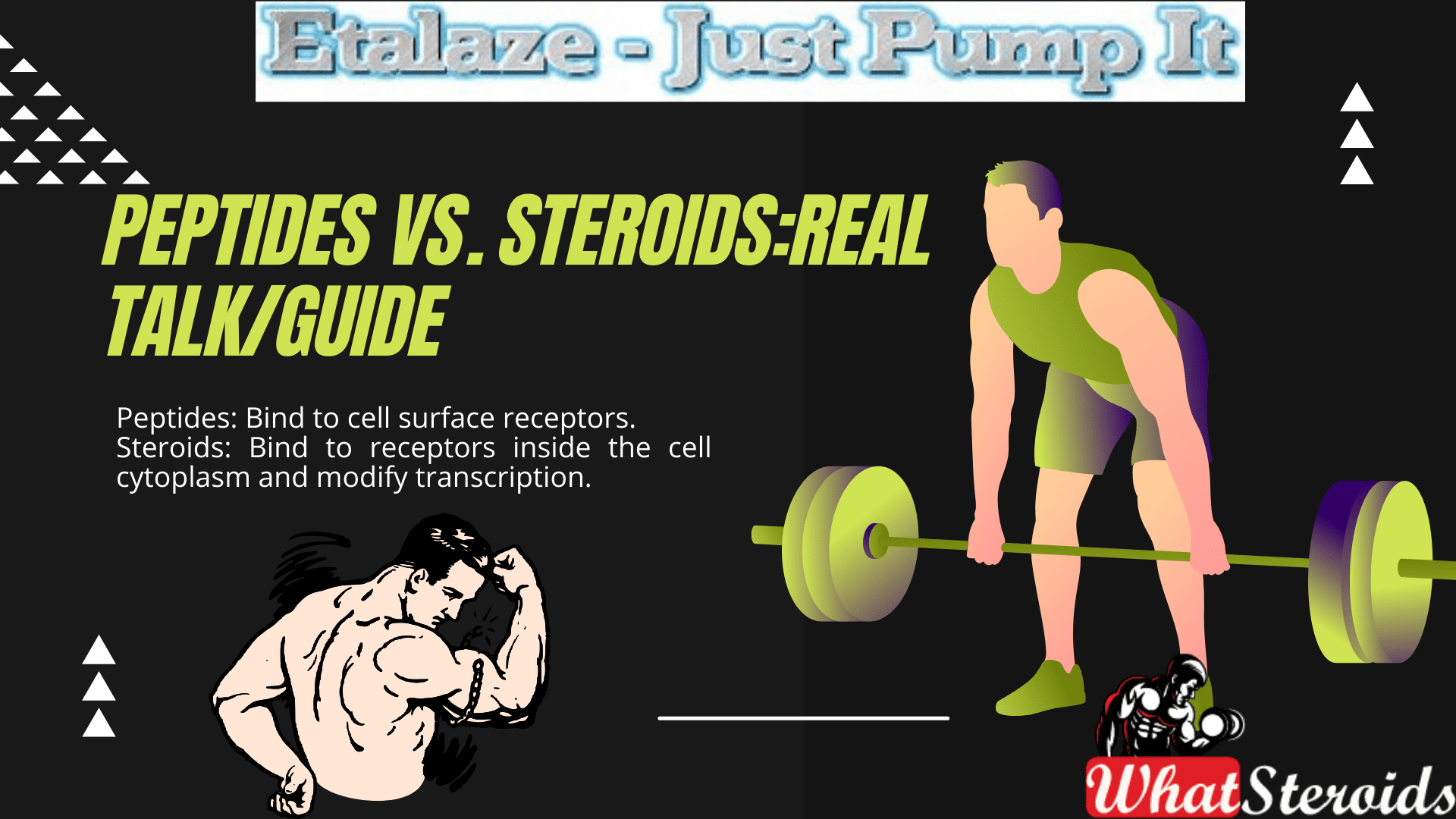
Many bodybuilders are unable to distinguish peptides from regular steroids. In this article we're going to explore Peptides vs. Steroids from various perspectives.
Let’s delve into the differences between peptides and steroids.
Mechanism of Action
-
- Peptides: These are short chains of amino acids. Peptides work by binding to specific receptors on the cell surface. They initiate signal transduction pathways, which activate various cellular processes. Peptides do not directly affect DNA or gene expression.
- Steroids: Steroids, on the other hand, penetrate the cell membrane and bind directly to DNA within the cell nucleus. They act as transcription participants, modifying gene expression.
Natural vs. Unnatural Effects
-
- Peptides: Peptides enhance natural processes in the body. For example, some peptides stimulate growth hormone release, improve recovery, and promote anti-aging effects.
- Steroids: Anabolic steroids artificially increase testosterone levels. They can be used for hormone replacement therapy but may have side effects due to their unnatural impact on the body.
Related Article: Oral Primobolan Cycle
Binding Sites
-
- Peptides: Bind to cell surface receptors.
- Steroids: Bind to receptors inside the cell cytoplasm and modify transcription.
Applications
-
- Peptides:
- Weight Loss: Certain peptides can aid weight management.
- Recovery & Repair: Peptides like BPC-157 support tissue healing.
- Anti-Aging: Some peptides have skin-rejuvenating properties.
- Reproductive Health: Peptides like kisspeptin-10 may impact reproductive health.
- Cognitive Enhancement: Selank and semax are nootropic peptides.
- Steroids:
- Hormone Replacement: Used for male hypogonadism (low testosterone).
- Muscle Building: Anabolic steroids promote muscle growth.
- Performance Enhancement: Athletes sometimes misuse steroids for performance gains.
- Peptides:
Peptides Vs. Steroids Risk Profile
-
- Peptides: Generally considered safer with fewer side effects.
- Steroids: Higher risk of adverse effects, including liver damage, cardiovascular issues, and hormonal imbalances.
Peptides Vs. Steroids Dosages
Peptides
Dosages vary based on the specific peptide and desired effect.
Let’s explore the dosages for various peptides commonly used in bodybuilding. Remember that individual responses may vary, so always consult with a healthcare professional before starting any peptide regimen.
CJC-1295 and Ipamorelin Stack
CJC-1295
Typical Dosage: 1000 mcg to 2000 mcg per week.
Cycle Duration: 8 to 12 weeks (60 to 90 days).
Ipamorelin
Typical Dosage: 200 mcg to 300 mcg per day.
Cycle Duration: Similar to CJC-1295 (8 to 12 weeks).
Average Cost: Approximately $49 (Prices may vary depending on the supplier and product concentration).
GHRP-6
Typical Dosage: 4-10 mg per week, divided into two doses per week.
Cycle Duration: 4-6 weeks, followed by a maintenance dose.
Benefits: GHRP-6 stimulates growth hormone release, aiding muscle growth and recovery.
BPC-157
Typical Dosage: Varies based on the specific purpose (e.g., injury recovery or muscle healing).
Cycle Duration: Often used for 4-6 weeks.
Application: BPC-157 accelerates tissue repair and supports muscle healing.
IGF-1 (Insulin-like Growth Factor)
Dosage: Typically administered subcutaneously.
Cycle Duration: Varies; consult with your personal trainer or healthcare professional.
Benefits: IGF-1 promotes local muscle growth and repair.
Steroids
Dosages depend on the steroid type and purpose (e.g., medical or athletic use).
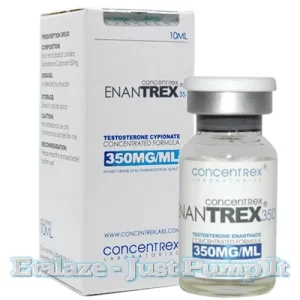 Click Here to Buy EnanTREX ® 350 mg/ml by Concentrex
Click Here to Buy EnanTREX ® 350 mg/ml by Concentrex
Let’s dive into a comprehensive guide on steroid dosages for bodybuilding. Keep in mind that individual responses can vary, and it’s crucial to consult with a healthcare professional before starting any steroid regimen. Here are some common dosages for various steroids
Must Read: Beginner Bulking Cycle
Beginner Steroid Cycles
Testosterone Cycle
Dosage: Typically ranges from 300 mg to 500 mg per week.
Cycle Length: Usually 8 to 12 weeks.
Rest Period: Allow at least 4 to 6 weeks between cycles.
Anavar (Oxandrolone) Cycle
Dosage: Around 20 mg to 50 mg per day.
Cycle Length: 6 to 8 weeks.
Purpose: Anavar is mild and suitable for beginners, promoting lean muscle gains and fat loss2.
Bulking Steroid Cycles
Dianabol (Methandrostenolone) Cycle
Dosage: Typically 20 mg to 50 mg per day.
Cycle Length: 4 to 6 weeks.
Benefits: Dianabol is known for rapid muscle growth and strength gains.
Anadrol (Oxymetholone) Cycle
Dosage: 50 mg to 100 mg per day.
Cycle Length: 4 to 6 weeks.
Purpose: Anadrol is potent for bulking and increasing red blood cell production.
Trenbolone Cycle
Dosage: Varies (typically 200 mg to 400 mg per week).
Cycle Length: 8 to 10 weeks.
Benefits: Trenbolone promotes muscle growth, strength, and fat loss.
Deca Durabolin (Nandrolone Decanoate) Cycle
Dosage: 200 mg to 400 mg per week.
Cycle Length: 8 to 12 weeks.
Stacking: Often combined with testosterone for synergistic effects.
Cutting Steroid Cycles
Winstrol (Stanozolol) Cycle
Dosage: 20 mg to 50 mg per day (oral) or 50 mg to 100 mg every other day (injectable).
Cycle Length: 6 to 8 weeks.
Purpose: Winstrol helps preserve lean muscle during cutting phases.
Primobolan (Methenolone) Cycle
Dosage: 400 mg to 600 mg per week.
Cycle Length: 8 to 10 weeks.
Benefits: Primobolan is mild, promotes quality muscle, and has minimal side effects.
Clenbuterol Cycle
Dosage: Varies (typically 20 mcg to 120 mcg per day).
Cycle Length: 2 weeks on, 2 weeks off.
Purpose: Clenbuterol aids fat loss and enhances metabolism.
Advanced Steroid Cycles
Anadrol / Testosterone / Trenbolone Cycle
Dosages: Varies based on individual tolerance and goals.
Stacking: Combining Anadrol, testosterone, and trenbolone for maximum effects.
Winstrol / Proviron / Trenbolone Cycle
Dosages: Tailored to advanced users and pro bodybuilders.
Stacking: Winstrol, Proviron, and trenbolone synergize for cutting and hardening.
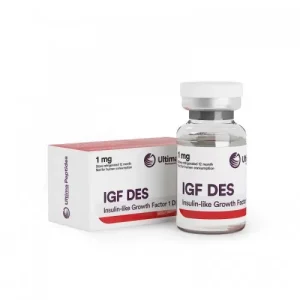 Click Here to Buy IGF-1 DES 1mg by Ultima Pharmaceuticals
Click Here to Buy IGF-1 DES 1mg by Ultima Pharmaceuticals
Natural Alternatives
-
- Peptides: Consider natural alternatives like collagen peptides for skin health or melatonin for sleep.
- Steroids: Natural alternatives include resistance training, proper nutrition, and rest.
Peptides Vs. Steroids Impact on Muscle Growth
Peptides
Lean Muscle Gain: Peptides promote lean muscle mass by stimulating protein synthesis.
Recovery: Faster recovery from intense workouts and injuries.
Anti-Catabolic Effects: Peptides prevent muscle breakdown.
Example: Imagine an athlete recovering from a muscle strain. BPC-157 administration accelerates tissue repair, aiding muscle growth.
Steroids
Rapid Muscle Hypertrophy: Steroids lead to significant muscle growth due to increased protein synthesis.
Increased Strength: Athletes using steroids experience enhanced performance in strength-based activities.
Improved Recovery: Steroids reduce muscle damage and inflammation.
Example: A bodybuilder using testosterone sees substantial gains in muscle size and strength during a bulking phase.
FDA Stance on Peptides Vs. Steroids
The FDA has closely examined the commercialization and utilization of specific peptides and steroids, expressing apprehensions about their safety and the absence of approval for numerous substances.
As a result, the FDA has prohibited the sale of several peptides formerly favored by bodybuilders and fitness enthusiasts due to their purported muscle-building and performance-enhancing attributes.
This regulatory measure emphasizes the significance of following lawful and secure protocols when contemplating peptides for enhancing muscle growth.
It is crucial for individuals to remain well-informed regarding the peptides that adhere to FDA guidelines, enabling them to make prudent and lawful decisions concerning their health and fitness routines.
Importantly, the legality of steroids and peptides varies among countries and jurisdictions. We recommend checking legality in your country before commencing your routine.
Also Read: Varicose Veins In Bodybuilders-Risk Factors and How to Mitigate Them
Overall
As observed, steroids and peptide therapies share certain similarities in their effects, including enhanced strength, improved endurance, and increased fat burning, which are often sought after by individuals aiming to enhance their physical performance and appearance.
However, while both can achieve these outcomes, the risks associated with steroids are considerably higher compared to peptides.
Fred Kyle, a Certified Peptide Specialist at the Etalaze, advises individuals to carefully consider the potential consequences of using steroids on their health before opting for them as a means to enhance performance.
For those seeking an extra boost to overcome performance plateaus or slumps, it's recommended to consult with a professional, preferably your personal trainer or physician.
-

 Steroids2 years ago
Steroids2 years agoShavers and Other Body Grooming Equipment for Bodybuilders In 2023
-

 Steroids2 years ago
Steroids2 years agoChatGPT and Other Avenues to Find Great Bodybuilding Coaches
-

 Steroids2 years ago
Steroids2 years agoBest Oil Recommendations Before Competition for Subtle Shimmer
-

 Steroids2 years ago
Steroids2 years agoPowerlifting Vs Power Building: Find Out the Big Difference and When to Shift Between the Two
-

 Bodybuilding Products1 year ago
Bodybuilding Products1 year agoTelmisartan In Bodybuilding: An Expert’s Advice
-

 Nutrition2 years ago
Nutrition2 years agoEverything Nutritional Food: What’s Too Much Or Too Little
-

 Bodybuilding9 months ago
Bodybuilding9 months agoPrimal Movements: Our Ultimate Guide for Maximum Results
-

 Bodybuilding1 year ago
Bodybuilding1 year agoChia Seeds in A Bodybuilder’s Diet: An Expert’s Advice
-

 Anabolic Steroids10 months ago
Anabolic Steroids10 months agoJoint Stiffness: How to Manage It While on AAS
-

 Steroids1 year ago
Steroids1 year agoAnadrol Cycle: Benefits, Doses, Alternatives, etc.
-

 Anabolic Steroids1 year ago
Anabolic Steroids1 year agoLegality of Anabolic Steroids In Latin America
-

 Beginners2 years ago
Beginners2 years agoTren Cycle for Beginners
-

 Bodybuilding9 months ago
Bodybuilding9 months agoHow Effective is Bone Broth for Recovery?
-

 Steroids10 months ago
Steroids10 months agoOmnitope (Oxytocin)
-

 Bodybuilding1 year ago
Bodybuilding1 year agoHow Much Is Too Much Cardio? Understanding Heart Rate Zones
-

 Steroids9 months ago
Steroids9 months agoSleeping Positions for Effective Muscle Recovery
-

 Bodybuilding1 year ago
Bodybuilding1 year agoList of FDA-Approved Peptides
-

 Bodybuilding1 year ago
Bodybuilding1 year agoCalorie Dumping: A Bodybuilder’s Guide
-

 Bodybuilding2 years ago
Bodybuilding2 years agoCompetition Prep Cycle for Pro Bodybuilders
-

 Bodybuilding8 months ago
Bodybuilding8 months ago2nd Edition of Natural Bodybuilding Competition Facts
-

 Bodybuilding1 year ago
Bodybuilding1 year agoDemystifying Hypertrophy Training
-

 Bodybuilding9 months ago
Bodybuilding9 months agoAre Nootropics a Better Option to AAS?
-

 Steroids4 months ago
Steroids4 months agoOstarine For Beginners: The Ultimate Guide
-

 Anabolic Steroids12 months ago
Anabolic Steroids12 months agoHow Much Do You Know About B-AET? A Fat Burner You’ve Been Missing
-

 Product Reviews12 months ago
Product Reviews12 months agoTop Vitamins for Skin Health




